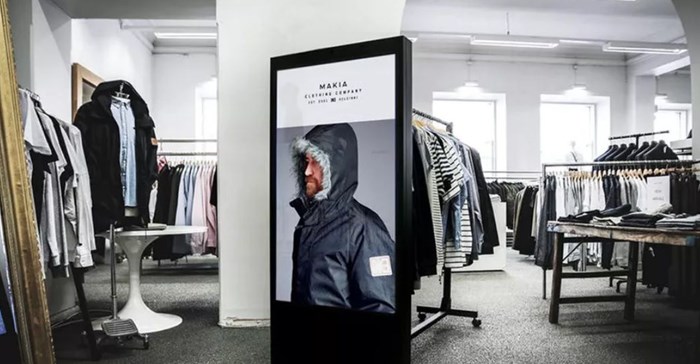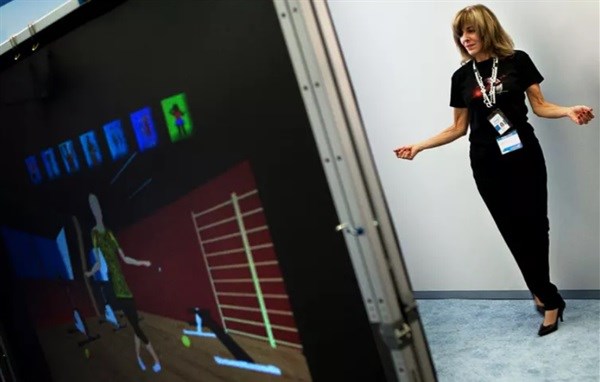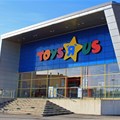Digital by design: how technology is breathing new life into the fashion business

A major crisis
After more than half a century of robust growth and structural development – the number of shopping centres in the United States grew twice as quickly as the population between 1950 and 2015 – the retail sector has recently been enduring the worst crisis in its history. Visitor numbers in shopping centres has been halved. A number of fashion retail chains and brands such as BCBG Max Azria, American Apparel and Mim have announced they have ceased trading due to bankruptcy. Other store networks such as Michael Kors, The Gap and Abercrombie & Fitch, which not long ago were lauded as successful models, are in difficulty and being forced to close numerous outlets.
Certain streets in Manhattan, such as Bleecker Street – once highly prized by retail outlets – now stand out for the large number of available leases. Although in a different sector, the very recent announcement of the bankruptcy of Toys ‘R’ Us is further evidence of this phenomenon.
While these difficulties reflect the existence of a real and profound economic crisis – further illustrated by the success of concepts such as TJMaxx, whose model is based on selling the stock of bankrupt stores – other segments of the distribution sector are thriving, particularly in the fashion sector.
For example, with turnover of 485 billion euros, Alibaba became the leading player in global distribution in 2016, revealing the dominant position of e-commerce and of China, but also that of new models such as marketplaces. Similarly, Amazon has posted growth of $64 billion since 2010, equalling the combined sales of its three competitors,Nordstrom, Sears and Macy’sin 2016. The share of e-commerce in the distribution sector is continually growing and this is even more apparent in the fashion industry.
New actors, new models
The recent buyout of several innovative e-commerce firms in the fashion sector, such as ModCloth and Bonobo by WalMart, which until recently was the global leader in the distribution sector, is further evidence of this phenomenon. In addition, Amazon – the leading retailer in the textile and clothing sector in the United States since 2015 – has asserted its desire to strengthen its domination in the sector, as reflected by Jeff Bezos’ recent statements, the company’s recruitment of leading executives in the sector, the creation of seven own-label fashion brands, the launch of its personal assistant Alexa (Echo) and the firm’s investments in Fashion Tech start-ups.
Online fashion sales have risen to unexpectedly high levels, particularly considering sector specifics and obstacles – the need for customers to touch and try on clothing, impulse and “must-have” purchases, size issues. Consequently, the emphasis has been placed on developing solutions to make the products displayed on-screen more appealing and to limit the number of returns, which has led to the development of a number of “big data"-based technologies such as Easysize, and 3D-modelling-based solutions such as Fitizzy, in order to facilitate the selection of sizes and products without customers having to try them on.
At the same time, a number of innovative concepts, especially in the world of fashion and luxury goods, are recording high growth rates. Among them is Farfetch, which is considered to be the most dynamic British retailer. Its platform showcases independent luxury boutiques and gives them access to a global market.
Paradoxically, as well as updating the very concept of multi-brand stores, the success of online platforms also seems to be breathing new life into a number of traditional shops. In this context, the boundaries that separate the physical and online distribution sectors are becoming increasingly blurred, or even non-existent, as illustrated by Farfetch’s acquisition of the London department store Brown’s in 2015, working on the principle that a fashion purchase is first and foremost a physical experience.
Additionally, the purchasing experience very often involves a combination of stages that occur both online and in a physical store. According to Retail Drive, 65% of American consumers do online searches before visiting stores, following the ROPO (research online, purchase offline) concept. Conversely, according to the same study, over 55% of consumers visit stores before purchasing online, thus applying the principle of "showrooming”. It is therefore becoming increasingly difficult for retailers to know exactly where the purchasing process starts and ends.
Looking beyond the growth of e-commerce and its interactions with traditional trade through the development of omnichannel retailing, technologies are playing an increasingly important role in physical sales outlets where they are transforming the in-store customer experience.
These changes are particularly significant in the luxury and fashion sectors in which customer relations and purchasing processes are multifaceted and encourage the creation of an exclusive relationship with the customer. This has prompted the Burberry branch in Regent Street, London, which for many years has been considered the world’s most digitally savvy store, to use advanced technologies in its creative approach to attracting and retaining customers.
Other operators are creating “store of the future” concepts that test a range of new technologies, such as magic mirrors, selfie terminals and contactless checkouts.

Innovate to sell better online
Slowly but surely, the physical store is becoming as much of a meeting point and a recreational destination as a point of sale in the strict sense of the term. New technologies often play a valuable role in making a point of sale both user-friendly and fascinating. The advisory role is becoming increasingly important in the customer experience. Although this role may be performed by a physical person, it will often be guided by customer knowledge that is “stored” on a machine and enhanced by the power of data analysis.
On a more fundamental level, the development of technologies and the digitisation of the retail sector are transforming the entire value chain. The customer information that is gathered and analysed can be used to customise the product in terms of its style, size and general suitability. The entire manufacturing and distribution process is therefore shaped by the customer’s involvement, and this is made possible by digitising the customer relationship.
For these reasons, management of end customers and the gathering of information pertaining to them are becoming increasingly essential and have the potential to transform the entire value chain, from the choice of raw materials through to recycling. Fashion industry operators will only survive if they fully understand these key issues relating to the use of new retailing technologies.
All of these stakes are central to the research carried out at ESCP Europe by the professors and students of the Lectra “Fashion and Technology” Chair, who study the influence of technology in the various links of the value chain in the luxury and fashion industry.
Source: The Conversation Africa

The Conversation Africa is an independent source of news and views from the academic and research community. Its aim is to promote better understanding of current affairs and complex issues, and allow for a better quality of public discourse and conversation.
Go to: https://theconversation.com/africa









